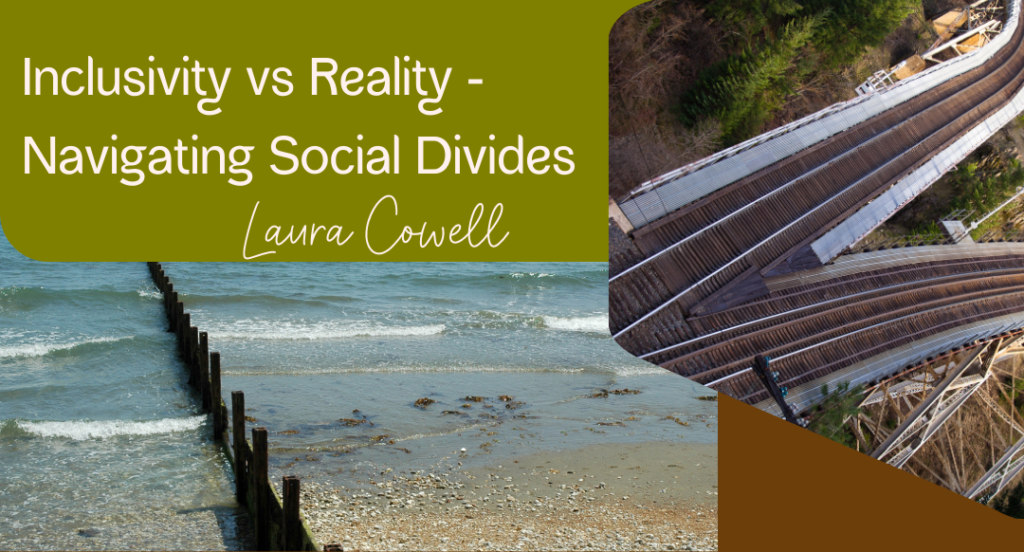
As I sit here with COVID and reflect on the concept of inclusivity in our society, I’m struck by the stark contrast between rhetoric and reality. While institutions, corporations, and communities often proclaim their commitment to diversity and equal opportunity, the structures of our everyday lives tell a different story—one where inclusivity grapples with entrenched systems of class and economic disparity.
From the segregated seating arrangements on airlines to disparities in healthcare access and the class divisions evident on cruise ships, it’s evident that access and experience are still largely dictated by financial standing. This makes me ask the question: Is society truly prepared to embrace real inclusivity when our everyday structures perpetuate exclusion?
Inclusivity, by its nature, implies the inclusion of those who might otherwise be marginalised. Yet, the practical application of this concept often falls short. Take the travel industry (what got me thinking about this at 2am in the first place), for example, which segments customers into classes, each with varying levels of comfort and service. While this segmentation may be commercially justifiable, it reinforces societal divisions that contradict the ideals of inclusivity.
In healthcare (thinking about this due to COVID), the quality of treatment and speed of service can vary dramatically depending on whether you have private insurance or rely on public health services. Such disparities serve as a stark reminder that even critical services are not immune to societal stratifications.
Cruise ships provide another illustration of this. The experience aboard these floating resorts can vary widely, from interior cabins without windows to luxurious suites with ocean views and exclusive amenities. These differences not only offer varied vacation experiences but also mirror and perpetuate class distinctions found on land.
At the core of this issue lies the economic model that underpins our societal structures. The belief that better service, experiences, and care come at a higher price reflects deeper social values equating worth with wealth. This creates a paradox where the talk of inclusivity conflicts with the actual exclusion.
Cruise ships provide another illustration of this. The experience aboard these floating resorts can vary widely, from interior cabins without windows to luxurious suites with ocean views and exclusive amenities. These differences not only offer varied vacation experiences but also mirror and perpetuate class distinctions found on land.
If society genuinely wants inclusivity, I feel it must address these systemic disparities. This could mean rethinking how services and products are structured and priced, as well as a cultural shift towards valuing every individual’s experience and dignity equally in tangible everyday realities.
Governments play a crucial role by implementing policies that minimise economic disparities in essential services like healthcare and transportation. This could include caps on differences in service levels or subsidies to make higher-quality services more accessible.
Companies, too, must reassess their practices to be more inclusive. Beyond token gestures of diversity, real change may involve restructuring pricing models or investing in ways to elevate baseline services for all customers, regardless of economic status. Action vs Buzzwords!
Real change comes from what people want. The more we understand these differences, the more pressure we put on institutions to truly include everyone. This means educating ourselves and changing how we see and value inclusivity—not just as a nice idea, but as something that benefits everyone.
While the discourse around inclusivity grows louder, the structural realities of our society continue to underscore a significant gap between aspiration and reality. True inclusivity demands more than superficial changes; it requires a profound re-evaluation of how services and experiences are structured and delivered. Until we reconcile these disparities, the ideal of inclusivity will remain just that—an ideal. We need to question not only whether we aspire to be inclusive but whether our social and economic systems are conducive to true inclusivity. Each of us holds the power to effect change, whether through advocating for policy reforms, supporting businesses that prioritise inclusivity, or simply cultivating understanding and empathy in our daily interactions.
Challenge ourselves to bridge the gap between aspiration and reality, bring hope through action for a world where true inclusivity is not just an ideal but a tangible reality for all.
You are Worth more than any Wealth!




